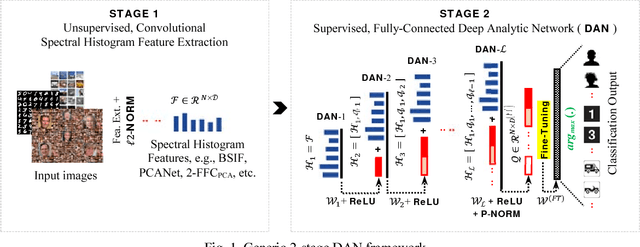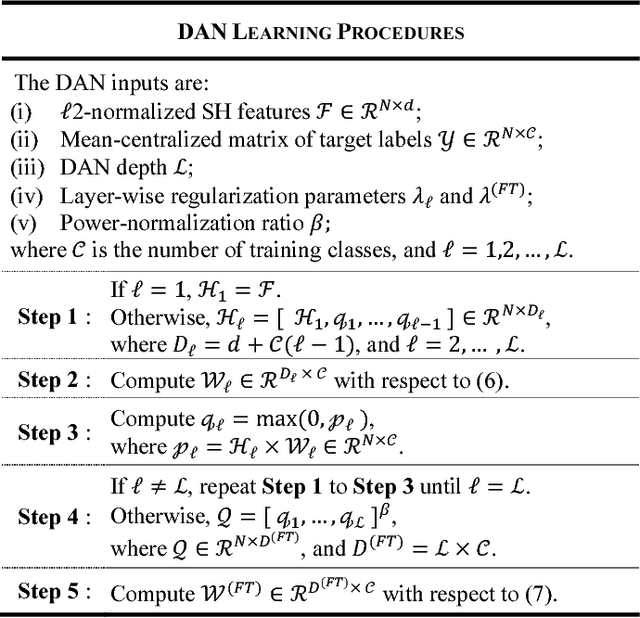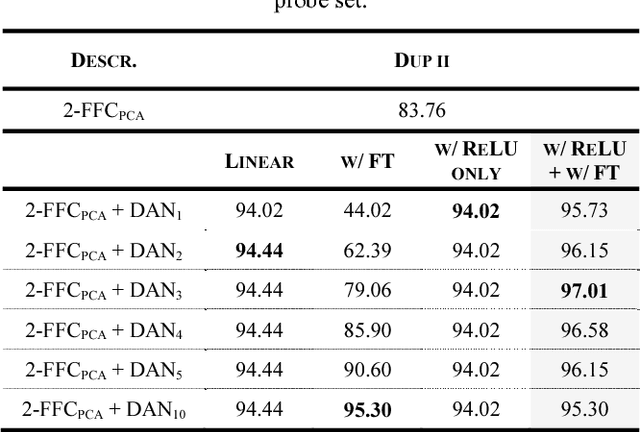Stacking-based Deep Neural Network: Deep Analytic Network on Convolutional Spectral Histogram Features
Paper and Code
May 21, 2017



Stacking-based deep neural network (S-DNN), in general, denotes a deep neural network (DNN) resemblance in terms of its very deep, feedforward network architecture. The typical S-DNN aggregates a variable number of individually learnable modules in series to assemble a DNN-alike alternative to the targeted object recognition tasks. This work likewise devises an S-DNN instantiation, dubbed deep analytic network (DAN), on top of the spectral histogram (SH) features. The DAN learning principle relies on ridge regression, and some key DNN constituents, specifically, rectified linear unit, fine-tuning, and normalization. The DAN aptitude is scrutinized on three repositories of varying domains, including FERET (faces), MNIST (handwritten digits), and CIFAR10 (natural objects). The empirical results unveil that DAN escalates the SH baseline performance over a sufficiently deep layer.
 Add to Chrome
Add to Chrome Add to Firefox
Add to Firefox Add to Edge
Add to Edge